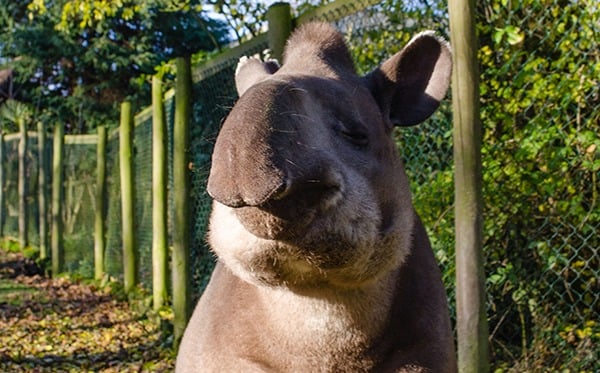World Tapir Day

World Tapir Day falls on the 27th April every year. It is a day to celebrate all 4 living species of tapir including the Malayan, Baird’s, Lowland and Mountain tapir. All tapirs are at risk of extinction and World Tapir Day is an event to raise awareness and create support, shedding light on the challenges and threats these amazing creatures face in the wild.
The Malayan tapir is the largest species and the only one that lives in Asia. It is easily recognisable with its black body and a white ‘saddle’ over its back. It can be found in forest habitats in Indonesia, Myanmar, Malaysia and Thailand.
The other 3 species of tapir are found in Central and South America. The Baird’s tapir is the largest of the American tapirs and is found from south east Mexico down to Panama. The Lowland tapir ranges from Colombia and Venezuela through Brazil to Northern Argentina (east of the Andes mountains). The Mountain tapir is the smallest species of tapir and is endemic to the Andes mountains and are found in Peru, Ecuador and Colombia.
Here at the zoo we have 3 Lowland tapirs, 2 males called Arthur and Woody and a female called Tiggy. They can be seen in our South America section of the zoo where they live in a mixed species exhibit. Lowland tapirs are usually dark brown to greyish-brown and they have a raised mane on top of their head which extends down to their shoulders.
Tapirs are an odd-toed ungulate (hoofed animal), with horses and rhinos being their closest relatives. They are often mistaken for anteaters due to their long, prehensile nose. They are able to use this flexible snout to grasp and pull leaves from plants and can even use it as a snorkel whilst swimming. Tapirs are excellent swimmers and will often spend their time wallowing in water which provides them with protection from predators. Their diet consists of leaves from small plants and shrubs along with tree bark, reeds, fruits and seeds. Tapirs are ‘seed dispersers’ meaning the seeds that they eat will be dispersed in their faeces allowing the forest to regenerate which is a key ecological process making tapirs an important part of the ecosystem.
Tapirs are threatened by habitat destruction and poaching. They are hunted for food and for their hides which are used to make sandals. They are also taken from the wild to be kept as pets. World Tapir Day helps raise funds to support tapir conservation projects worldwide therefore helping to conserve the species and their habitat.
By Michelle Dennis
Education Assistant


